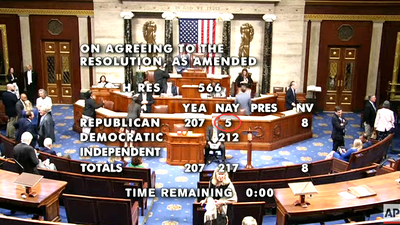Maleficent Trade Wars & The Art of Global Chaos
In grammar class, ‘Maleficent’ is what happens when ‘Magnificent’ goes goth. Forget light and glory, this is power dressed in shadows, elegance dipped in venom, and vengeance with high cheekbones. While ‘Magnificent’ throws a parade, ‘Maleficent’ crashes it with a smirk and a dragon. Greatness doesn’t always sparkle; sometimes it broods. And speaking of dark turns , April 2nd’s so-called US ‘Liberation Day’ might make it into the history books, but don’t expect them to mention the embarrassing policy U-turns barely a week later. The Disruptor-in-Chief’s Trade War has now been gently placed on ‘pause’ , for 90 days or forever, depending on the way that he can strike deal as he is still try to impose his way of ‘The Art Of The Deal’ to the rest of the world in a ‘Trumperialistic’ way of course.
First, he said he’d do it—and surprise! He actually did. The 47th President, back in the Oval Office since January 20th, 2025, made good on campaign promises that many dismissed as just bluster. Cue the tariff extravaganza: a 10% blanket tax on all imports, and a jaw-dropping 145% tariff aimed straight at Chinese goods. That’s on top of the usual suspects—steel, aluminium, autos, and anything not hugged tightly by USMCA. The result? One way or the other, Americans corporates and consumers are now paying an extra 25% in tariff taxes, up 23 percentage points in just three months. Economists predict these tariffs might settle around 18%, which sounds almost reasonable until you realize it puts us in Smoot-Hawley territory. You know, that fun little policy move that helped deepen the Great Depression which started with a sovereign debt crisis in Europe.
So what happens next? GDP is set to shrink by 1% in 2025, while prices float up somewhere between 1.6% and 2.7%. Translation: stagflation with a side of economic heartburn. But the real killer isn’t the tariffs, it’s the whiplash-inducing uncertainty. In a world where trade rules are written by executive order and rewritten by tweet, businesses are hitting pause on investments faster than you can say ‘policy risk.’ The U.S. Economic Policy Uncertainty Trade Index is now screaming at historic highs, making the 2018–2019 ‘Tariff Tantrum’ of Trump 1.0 look like a kiddie pool splash.
US Categorical Economic Policy Uncertainty Trade Policy Index.
Those who assess the state of the business cycle through market data rather than government propaganda, and who understand that the economy is ultimately transformed energy, know that the evolution of the S&P 500-to-oil ratio relative to its 7-year moving average is the only reliable way to gauge the true health of the U.S. economy. A glance at how trade uncertainty affects the business cycle leads to an obvious conclusion for anyone with a shred of common sense: a rise in trade policy uncertainty almost always pushes the S&P 500-to-oil ratio below its 7-year moving average within 6 to 12 months. In layman’s terms, rising uncertainty has historically been a reliable precursor to an economic bust, and it’s hard to see why this time would be any different.
S&P 500 to Oil Ratio (blue line); 7-Year Moving Average of S&P 500 to Oil Ratio (red line); US Categorical Economic Policy Uncertainty Trade Policy Index (axis inverted; green line).
Naturally, it should come as no surprise that when the Economic Policy Uncertainty Index starts screaming, 12-month forward EPS for the S&P 500 soon follows with a whimper, typically within 6 to 9 months. After all, nothing says ‘future corporate profitability’ like total policy chaos. If there’s one thing Wall Street truly hates, it’s making billion-dollar investment decisions in an environment where the rules are made up on Monday and rewritten by tweet on Tuesday.
S&P 500 12-month forward EPS (red histogram); US Categorical Economic Policy Uncertainty Trade Policy Index (axis inverted; blue line).
Geopolitically, Trump’s tariff crusade zeroes in on China, now facing a whopping 135% effective tariff rate, because nothing says ‘national security’ like a trade war. The justification? Vague threats and political theatre that no one dares unwind after an election year. Talks to dial things down are supposedly on the way, but don't hold your breath. Both sides are stuck in maximalist mode, and China, unlike the others, has fully retaliated. Why? Because it can. While armchair China experts like Lutnick, Navarro, and Kyle Bass (none of whom have ever set foot in China) foam at the mouth on cable news, Beijing quietly shores up domestic demand and shrugs off pressure like a seasoned heavyweight. Meanwhile, Washington’s grand plan to isolate China via alliances is floundering, turns out ‘America First’ doesn’t inspire much loyalty. Since the original tariff tantrum of Trump 1.0 back in 2018, the whole thing has become a tit-for-tat routine, less about resolving real issues and more about flexing for the cameras. Call it economic theatre with no intermission.
US Average Tariffs on China Exports (blue line); China Tariffs on US Exports (red line) since 2018.
In the end, Trump’s trade policy isn’t so much about economics as it is about flexing, think less Adam Smith, more WWE. The goal? Tear down a global system that dares to limit American swagger and replace it with a tariff-powered joystick he controls at will. Forget predictability, uncertainty is the point. It makes trading partners sweat and MAGA crowds cheer but for how long…
Coherent economic rationale? Please. These tariffs are more about vibes than spreadsheets. Sure, the focus has been on punishing China to satisfy domestic chest-thumping, but here’s the twist: U.S. imports from China peaked way back in October 2018 and have been sliding ever since, now under $32 billion a month. Meanwhile, China’s exports to ASEAN—the neighbouring bloc whose name the U.S. Defence Secretary probably couldn’t spell, have soared past $42 billion monthly. So what's the genius outcome of this trade war? The U.S. buys less from China… and China just sells more to its neighbours. The ‘Disruptor-in-Chief’ might have dreamed of economic domination, but what he actually sparked was a regional trade boom, just not for America. Call it the Art of the Misfire.
US Imports from China in USD (red line); China Exports to ASEAN (blue line).
The reality is that China’s been quietly decoupling from the U.S. and the west in general for years, slashing its export dependence, rerouting goods through Vietnam with a “Made in Vietnam-ish” label, and expanding its Belt and Road club across Asia and Africa. Meanwhile, the U.S. gets tariffs, higher prices, and a boomerang effect that hits American wallets harder than Beijing’s. Add a collapsing Chinese property market to the mix, and guess who’ll get blamed? Yep, Trump, the all-purpose scapegoat. But here’s the kicker: China plays chess, the U.S. electorate plays TikTok. As Mao once quipped about the French Revolution, when asked, ‘What has been the impact of the French Revolution?’ he replied, ‘It is too early to say.’
Beyond trade, these so-called ‘reciprocal’ tariffs also double as Washington’s last-ditch attempt to keep its grip on a world that’s clearly moved on to multipolarity. Pure coincidence, of course, that ‘Liberation Day’ just happened to line up with a fresh round of U.S.-Iran tension—this time over nukes, again. Talks are dragging along in Muscat, but not much is moving. The U.S. is threatening airstrikes unless Iran shelves its nuclear program, while Iran insists it’s all peaceful and would love a reboot of the 2015 JCPOA in exchange for lifting sanctions. Military action is still on the table, though it would likely backfire, missing its goals, sending oil prices soaring, and making life even harder for a global economy already wheezing under tariffs.
Iran, embargoed and all, is still pumping out 3.3 million barrels a day (almost 12% of OPEC daily oil output), most of which end up in Asia, especially China.
Any disruption there would tighten supply, push oil prices up, and hit U.S. corporate margins right when they’re already struggling to digest Trump's tariff buffet. With pricing power fading, a Middle East blow-up would all but guarantee the S&P 500-to-oil ratio drops below its 7-year moving average, sealing the deal on what history might call “Trump Stagflation: The Sequel.”
Iran OPEC Crude Oil Production Output (blue line); WTI Prices (axis inverted; red line).
Anyone who lived through the COVID-era supply chain meltdown knows exactly how well this ends: badly. With Trump-era tariffs now reaching embargo-level intensity, both the U.S. and China have about zero political incentive to hammer out a grand bargain. Instead, it’s a game of economic whack-a-mole, corporations will scramble to dodge tariffs, but higher costs and supply hiccups are inevitable.
Much of the spotlight is on flashy imports like smartphones and laptops—products without easy alternatives. Cue the classic Trump flip-flop: after slapping 125% tariffs on Chinese electronics, the administration promptly carved out exemptions for smartphones and much of computer hardware. Apparently, making iPhones outrageously expensive isn’t a winning campaign strategy. These items are still subject to earlier 20% tariffs, though, and the threat of more (hello, semiconductors) looms large.
https://youtube.com/shorts/WL3aquzJKg4?si=GAdjHyUCv9P-S2UW
While consumer goods grab headlines, the real pain is in the invisible stuff, components buried deep in supply chains that keep U.S. factories and builders humming. Tariffs here will trigger shortages and price spikes without a “Made in China” label in sight. Sure, services dominate the U.S. economy and are mostly insulated from Chinese supply shocks. But construction and manufacturing? Not so lucky. According to OECD input-output data, they’re the most exposed to Chinese inputs. Think of all those “cheap” construction materials stacked at Home Depot, most of them trace their way back to China. Slap a 145% tariff on that, and contractors won’t just feel the pinch, they’ll be bleeding. Sticker shock will hit customers next, killing demand just when the economy could really use a bit of resilience. Welcome to tariff-induced stagflation, home-improvement edition. For U.S. manufacturing, the “Made in America” dream comes with a “Made in China” parts list. The industries meant to gain from Trump’s tariff wall. like textiles, autos, and machinery, are actually stuffed with Chinese components. So while the red, white, and blue rhetoric rages, factories are scrambling for bolts and circuit boards.
OECD data shows the U.S. is about three times more dependent on Chinese inputs than China is on American ones, fitting, since China’s manufacturing base is also three times larger. And in classic tit-for-tat style, Beijing’s 125% tariffs will sting U.S. exporters too, but with a bit more shrug than panic.
In China, the hit lands mostly in high-tech: semiconductors, electrical gear, and aircraft parts. U.S. chip giants like Intel and Micron might dodge some bullets thanks to export controls, but tariffs on actual made-in-America chips still burn. Aerospace? Another pain point, China may be building jets, but they're still flying with Western engines.
The irony? U.S. tariffs hurt sectors full of MAGA hat-wearing workers, cars, construction, textiles, who might start wondering why ‘America First’ made their job harder. Meanwhile, China gets a fresh excuse to double down on self-reliance, exactly where its industrial policy was already heading. So yes, the trade war’s a mess—but at least it’s a strategic mess… for someone.
Another maleficent impact of the trade war launched by the Manipulator-in-Chief will likely strike where it hurts most for U.S. investors, those holding 401(k)s, as the emergence of a multipolar world, accelerated by the ongoing trade conflict, inevitably undermines what were once hailed as ‘Platform Companies,’ and what YOLO investors still affectionately call the ‘Magnificent Seven’.
A ‘Platform Company’ business model traditionally relies on four key pillars:
Free trade – enabling companies to produce goods wherever costs are most attractive.
Technological progress, especially in communications – allowing decentralization of design, production, and sales.
Recurrent overcapacity in most industries, ensuring a constant supply of goods to sell.
Seamless logistics, the ability to move goods efficiently via ships, ports, roads, airports, etc.; without this, outsourcing becomes a logistical nightmare.
Platform companies aren’t just tech darlings, they’re capitalism’s spoiled brats. Built on free trade, tech wizardry, global overcapacity, and seamless logistics, they’ve surfed the globalization wave like pros.
The model? Easy: invent in the U.S., make in China, sell everywhere, and pay taxes (lol) in Ireland. Does it sound familiar to the business model of the Magnificent 7, which were supposedly antifragile?
The so-called "antifragile" business model of the Magnificent 7 is just a polished version of the platform model, built on free trade, tech, and global supply chains. But with rising deficits and tariffs making a comeback, their "antifragility" is cracking, like a house of cards that stays up... until someone sneezes. With governments hungry for revenue, tariffs are back, and globalization-on-autopilot is stalling. The platform model is starting to look more like a house of cards in a wind tunnel.
Apple Supply Chain Analysis.
Imagine a US company making a phone, with production in China for $100, selling it to US consumers for $1,000, and adding $50 in distribution and $50 in R&D costs. That leaves a neat $800 profit. In a perfect Ricardian world, a 30% tax rate means the US government pockets $240, and GDP grows by $900 minus $100 for production costs.
Now, throw in an Irish intermediary with a 4% tax rate. The US company sells its $100 phone to the Irish subsidiary for $900, which then resells it. The result? The US company pays no tax, and Ireland snags $32 for doing... well, nothing. The company makes $768 after tax, the stock price soars, and the CEO's grandkids will never have to work. Meanwhile, the value created for the economy? A total mystery. It's all a far cry from Ricardo’s theory of comparative advantage, and more like a corporate magic trick.
By the way, the beauty of international tax loopholes! It’s all perfectly legal, thanks to a little thing called the double taxation treaty between Ireland and the US, crafted long ago by a flood of Irish immigrants, some of whom now sit in the Senate and House (how convenient). This treaty is basically untouchable, a sacred relic of diplomacy, ensuring that the US government gets nothing, while Ireland, China, and the shareholders rake it in.
So, what's the US government can do? Enter tariffs, 25-30% on that imported phone to reclaim its ‘pound of flesh.’ This is a short-term fix, of course, because the real solution might involve convincing the US company to set up shop on home turf. But who needs that when you can slap a tariff and pretend it’s a solution?
Here’s the twist: If the company can’t pass on the tariff costs to consumers, it’ll eat into profits. That’s bad for earnings, worse for Ireland’s tax take, but the consumer? They’ll likely pay the same, if not less, and maybe even see lower taxes. Shareholders? They're in a pickle and should sell stock in these platform companies, buy real capitalist companies, and invest in land in the rust belt.
Meanwhile, Chinese manufacturers, who are no longer reliant on the US, will happily sell phones at a slightly higher price elsewhere. In the end, what began as a noble push for globalization turned into a tax optimization playground for the global elite (yes, the Davos crowd), siphoning wealth from the less fortunate to fatten their own pockets.
The result? The ‘Magnificent 7’ are no longer invincible. As trade wars heat up, their once-sweet margins are set to melt faster than snow in the Sahara.
Operating Margin of The Magnificent 7 Index (blue line); S&P 500 index (red line) since December 2019.
You don’t need a PhD in finance to see what’s coming: as tax hikes loom, the risk of the so-called Magnificent 7 turning into the Maleficent 7 is rising fast. Most investors don’t even realize their portfolios are stuffed with these names, courtesy of passive ETFs, 401ks, and auto-pilot investing. But here’s the twist: not only is looming stagflation bad news for these tech darlings, they’re also staring down a serious valuation reset. Meanwhile, forgotten sectors like U.S. energy are waiting in the wings. When the S&P 500-to-oil ratio breaks below its 7-year average, it could mark the start of a new regime, one where energy outperforms tech, just like it did from Jan 2022 to April 2023. In short: the next act might not feature flying Teslas but a comeback for good old oil rigs.
Upper Panel: S&P 500 to oil ratio (blue line); 7-Year Moving Average of S&P 500 to Oil Ratio (red line): Middle Panel: Gold to Bond ratio (green line); 7-Year Moving Average of Gold to Bond ratio (red line): Lower Panel: Relative performance of Magnificent 7 to S&P 500 Energy Index (yellow line).
Oh, of course, Trump and his MAGA China hawks clearly mastered the art of antagonizing their largest creditor. Because nothing screams ‘deal-making genius’ like poking the country that holds a massive stash of your debt. It’s almost laughably simple: if you antagonize China, they sell Treasuries, yields spike, and interest rates go up. If you ease tensions, maybe even nod politely at the One China Policy, they stop selling, and voilà, rates stabilize. But apparently, this bit of geopolitical common sense now qualifies as Nobel Prize-worthy economics. The irony? While some analysts scratch their heads in confusion, it’s usually because their worldview ends at their own borders. Global capital flows? Sovereign bond markets? Foreign policy? Too exotic, evidently. After all, why factor in the rest of the planet when you can just blame the FED or your enemy and call it a day?
https://www.whitehouse.gov/lab-leak-true-origins-of-covid-19/
Read more and discover how to trade it here: https://themacrobutler.substack.com/p/maleficent-trade-wars-and-the-art
If this research has inspired you to invest in gold and silver, consider GoldSilver.com to buy your physical gold:
https://goldsilver.com/?aff=TMB

Disclaimer
The content provided in this newsletter is for general information purposes only. No information, materials, services, and other content provided in this post constitute solicitation, recommendation, endorsement or any financial, investment, or other advice.
Seek independent professional consultation in the form of legal, financial, and fiscal advice before making any investment decisions.
Always perform your own due diligence.
NEVER MISS THE NEWS THAT MATTERS MOST
ZEROHEDGE DIRECTLY TO YOUR INBOX
Receive a daily recap featuring a curated list of must-read stories.
Trending on ZeroHedge

"Buckle The F**k Up": Trumpworld Rages At GOP Holdouts After Tax Bill Stalls In House

The Last Time Gold Moved Like This Was 1929

























